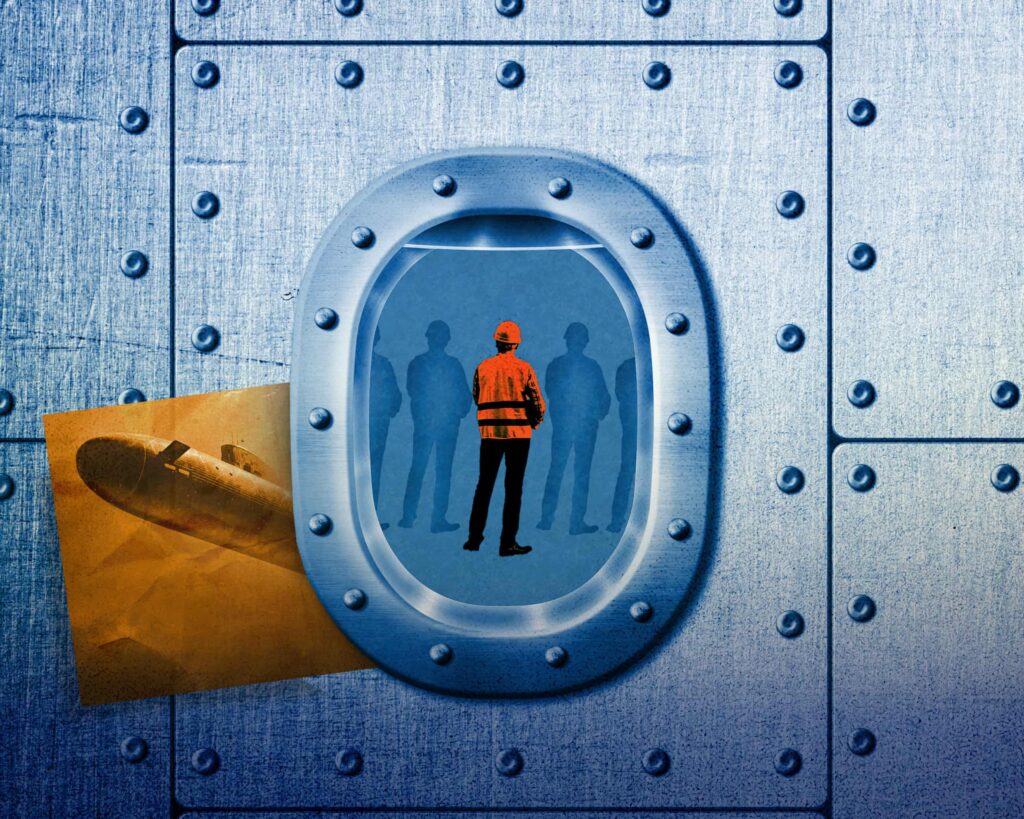
UPDATE: Australia’s ambitious nuclear submarine program is facing a critical challenge as officials warn of a severe shortage of trained personnel to operate and maintain the vessels. During a tense Senate hearing, Vice-Admiral Mead emphasized that the most pressing issue for the AUKUS project is not just the submarines themselves, but securing the workforce needed to keep them operational.
The Senate estimates session revealed that while the focus has been on the submarines’ cost and delivery timeline, the urgent reality is that Australia may lack the skilled professionals necessary. Mead stated, “Ensuring Australia has the workforce to deliver this program remains our biggest challenge.”
According to reports, Australia will require an additional 70,000 welders by 2030 to avoid jeopardizing the submarine initiative. The Osborne submarine yard in South Australia is expected to need up to 4,000 workers for upgrades, with another 5,500 workers needed for the construction of the submarines. Without these critical tradespeople, experts warn that the AUKUS project could face catastrophic delays.
Former submarine commander Peter Briggs criticized the program’s feasibility, stating, “The AUKUS optimal pathway is a road to a quagmire,” suggesting that Australia cannot upscale its submarine crews quickly enough. Current estimates indicate that the navy’s personnel must increase from approximately 850 sailors to around 2,700 by the 2040s to effectively crew the new submarines.
The complexity doesn’t end there. The Virginia-class submarines, which are set to be a part of Australia’s fleet, require crews of 134, significantly more than the current 56 on the Collins-class. This escalation means that Australia must not only recruit more personnel but also train them, a process that can take between 16 to 18 years.
Mead reported that over 170 navy personnel have begun training on US nuclear submarines, with 65 already gaining experience. By 2030, the goal is to train 400 officers and sailors ready for deployment. However, the clock is ticking, and the urgency of building this skilled workforce cannot be overstated.
The stakes are high; failure to address these workforce shortages could lead to the AUKUS submarines being late or, worse, not operational at all. The CEO of Weld Australia, Geoff Crittenden, stated, “This is a full-blown capability crisis… If we don’t address this issue now, AUKUS will fail.”
Experts warn that Australia must act swiftly to develop its workforce. Associate Prof Edward Obbard from the University of New South Wales noted that the timelines are tight and the current training pipeline is insufficient. He emphasized the need for a mix of international talent to bridge the gap while local training programs ramp up.
The AUKUS plan is seen as a historic opportunity for Australia to bolster its defense capabilities. However, significant investment in training and recruitment is required to turn that opportunity into reality. As Jack Dillich, a former submarine officer, remarked, “A once-in-a-generation opportunity like AUKUS demands a long-term, strategic response, not just investment in ships and steel, but in people.”
With the future of Australia’s naval power hanging in the balance, officials are under pressure to ensure that the nation is prepared to meet the challenges of operating nuclear submarines. The message is clear: immediate action is essential to avoid a potential crisis in defense readiness.






